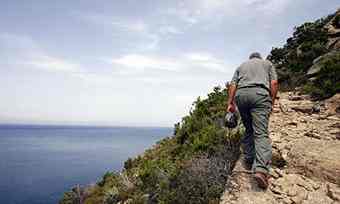Visitors are to be charged up to €50 a head to visit one of the last untouched spots in the Mediterranean – the island of Montecristo, whose wild beauty inspired Alexandre Dumas's novel of treasure and revenge.
 The announcement represents a first step towards the commercialisation of a nature reserve that Silvio Berlusconi's environment minister has said could raise €1m a year. In a television interview in June, Stefania Prestigiacomo said Montecristo "could be sold for tourism and inserted into an absolute elite circuit".
The announcement represents a first step towards the commercialisation of a nature reserve that Silvio Berlusconi's environment minister has said could raise €1m a year. In a television interview in June, Stefania Prestigiacomo said Montecristo "could be sold for tourism and inserted into an absolute elite circuit".
The island forms part of the Tuscan archipelago national park. Like Italy's other nature reserves, it is facing a 50% budget cut as part of a package of emergency measures approved by parliament last week, aimed at staving off a Greek-style financial crisis.
The minister's suggestion was vigorously opposed at the time by the park's director, Mario Tozzi. But in an apparent effort to meet the government halfway, he told a conference last week, organised by the environmental group Legambiente, that a ticket system would come into operation next year.
"If the cuts are confirmed, the Tuscan [natural] parks will lose more than €3m. So we won't even be able to guarantee the employees their salaries," Tozzi told the Corriere della Sera newspaper.
Currently, Montecristo's only inhabitants are a lighthouse keeper, his family and a couple of forestry guards. After being made a nature reserve in 1971, the island became virtually impossible to visit.
Two years ago it was announced that up to 2,000 people a year would be allowed to visit its tiny natural history museum and that another 1,000 people would be admitted on guided tours. But the difficulty of obtaining permits has meant many fewer have actually seen the white beaches, turquoise coastal waters and pink-grey granite.
The latest announcement is bound to raise fears that, if access is limited only by the price of a ticket, numbers will soar. In view of the cuts, the park authorities may struggle to lay on sufficient guides.
The hero of Dumas's novel, The Count of Monte Cristo, found buried gold and jewels there. But the island's real treasure is its wildlife: it is an important refuge for migrating birds and home to many rare plants and animals, including a snake, the Montecristo viper, which is unique to the island.
Author: John Hooper | Source: Guardian.co.uk [August 01, 2010]